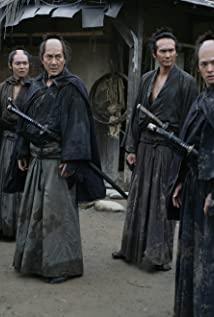Pulling the Trigger: The Essentials of Hiroyuki Imaishi’s Anime
As a fan of Studio Trigger, Imaishi Yangzhi has always wanted to write some praise for the works of the "Imaishi Department", but it has always been difficult to find a good opportunity. The reason for this is probably that the animations of this series have always attracted attention with their wild, unbridled, fancy, and vibrant styles, making it difficult for the audience to immediately change their minds and explore the form of these works in depth while enjoying the visual pleasure. (form) or meaning (significance). After a little analysis, it is not difficult to find that in most of the animations supervised by Imaishi, the radiant "appearance/ schein " and the so-called "nonsensical" stories are composed of some basic elements (essentials). )support. These elements, on the other hand, are the logic upon which those uniquely animated worlds can be built. This article takes "Promea" as the motivation, and briefly talks about several basic elements in the animation of Imaishi, in order to provide some entry points for further research on Imaishi in the future.
Otaku-ness & Fanservice
If you want to ask what is the essence of Imaishi animation, I will most likely answer, otaku, or the "(evil) taste" of otaku culture. Intuitively, these interests are those concepts, elements, or “discourses” that are “encoded” for the otaku’s favor, such as the most extensive connotation and extension of Meng (meng え), which arouses passionate emotions. "Fire" (burning える), or deliberately showing off soft pornography (eroticism) with (female) characters as a "fan service" to the audience. Imaishi has been working in the GAINAX animation studio led by Hideaki Anno since the beginning of his career. The latter is known as the "house club" among animation enthusiasts, which means that he is well acquainted with some common hobbies of the house group, and is proficient in using and Encode this set of "home" discourses including the above concepts. After Jinishi established his own business, his tendency to use "otaku-ness" as the core of his works is more obvious: "Tianyuan Breaks Through Red Lotus Rock" can be regarded as an orthodox "radish (mecha)" blood animation, and among them Mechas are combinable and incremental; "Angel of Garter" and "Double Cut Girl" are clearly making a fuss about soft porn for men (women's underwear, body, sex); in "Space Patrol Luluzi" Emphasis on "cute", and this work "Promea" is an analogous transformation of "burning". Of course, these elements of otaku culture are not isolated, and often cross-appear and interact in the same work.
Hypostatization of Ideas
In Imaishi animation, the basic setting and main contradiction of the story are often based on the concretization and materialization of the concept of "paired". In the process of setting up the background, a basic binary opposition is created as the inner basis for the development of all plots. In "Tianyuan Breakthrough", the contradiction between the spiral family and the anti-spiral family stems from subjective initiative (grasp one's own future and accept the unknown) and instrumental rationality (follow the predictions made by the iron law of science to eradicate potential dangers); "The core concept is the relationship between "interior (people)" and "exterior (clothing)", which is reflected in the action of "wearing" and its rich variants in battle and life; " Space Patrol Luluzi fills in a lighthearted comedy with grand concepts like "useful" and "useless," to the importance of cosmic values and individual emotions. In "Promea", the abstract "burning" emotion or spirit is first embodied as a physical process: "burning" (this burning is not "fire", but "Promea", a kind of Burning creatures); the relatively difficult physical process of burning is further embodied as various "burning creations" that can be deformed, manipulated and interacted with. The contradiction of the story itself is driven by two different forms of "burning" confrontation: the material "burning" floods into disaster (arson behavior of the Crazy Burners, the nuclear explosion crisis), and the abstract "burning"— -The "spirit of fire fighting" represented by Garo - put on the shell of science and technology and social public services, and used material water and ice to "fire fire".
On the basis of these various paired concepts, the space, objects and even social existence in Jinshi's animation can actually be regarded as the embodiment of the concept. Therefore, in the clothing empire of "Double Cut Girl", weapons and equipment, daily life and combat, social class, etc. are all linked to the clothing industry. In Promea, the primary consideration in urban planning and architectural design is the firefighting function. The faucets and other fire-fighting supplies are prototyped items, and the action scenes are demonstrated in the fire-fighting work.
Post-modern/Popular Aesthetics
Another major feature of Imaishi animation is its (in a broad sense) postmodern or pop aesthetics. Specifically, it can be divided into three points:
First of all, Imaishi Animation prefers the annihilation landscape in the cosmic dimension, at the cost of the destruction of the earth/human beings, as the crisis, conspiracy, revealing of all secrets and battle climax of the story. Presumably, this preference is due at least in part to Evangelion, which pioneered this "end" narrative. In this classic animation in which Imaishi served as the original painting, all human beings except the protagonists Shinji and Asuka finally merged into LCL, basically realizing the orangeization of all members. Such a design of "destroying the individual and uniting all human beings into a whole" has been widely used in the history of animation. For example, in the popular "Naruto", Madara Uchiha tried to create an "unlimited monthly reading community" at the end, so that everyone was imprisoned in their own hallucinations, thereby uniting human beings at the physical level. This kind of situation is also very common in Jinshi animation: in "Tianyuan Breakthrough", the final opponents of the Spirals, the Anti-Spirals, all share the same will, and try to assimilate the whole universe with this will; the villain in "Double Cut Girl" Luo Xiao of the Dragon Academy attempts to completely fibrosis human beings and the earth; Clay Fawcett in "Promea" also rebuilds a new human society at the cost of the destruction of the earth. Whether and how this tendency can relate to logocentrism in the sense of "serious philosophy" is an interesting subject of inquiry.
Second, there are always striking (dys)utopian buildings in Imaishi animations: they are usually at the highest point in the world, dominated by the geometric design favored by brutalism, and at the same time have suprematism ) The "absolute sense" and "futuristic sense" of buildings that go straight into the sky, such as the Instinct Character Academy in "Double Cut Girl", which is upgraded like a wedding cake, and the Fawcett Consortium in "Promea" building. These buildings are undoubtedly the external incarnations of animated characters (mostly villains) and plots, usually symbolizing order and power, and are the objects that the protagonist who originally resides in order tries to break (both interiorly and exteriorly).
In addition, starting with "Double Cut Girl", a wording aesthetic using large bold fonts has become another stereotype that Imaishi loves. This monochromatic, almost-full-screen manifesto slogan is a bit like the “high street” fashion brought by today’s fast-fashion brands. The content of these slogans, or the names of characters, or the names of equipment and skills, reflects a "manifesto" style consideration. In "Promea", these slogans even began to change synchronously with the actions of the characters and the changes in space (for example, the subtitle wall behind the mech collapsed with the mech falling to the ground), resulting in a subtle "breaking the first" Four Walls" attempt. At the same time, whether this effect of "speaking and following the law", in addition to the shared tradition of Japanese animation, can once again be linked to the tendency of logos center (the original meaning of "logos center" is to firmly believe in a certain "Ultimate words" such as presence, essence, truth, reality, etc., see Eagleton, 1996: 113) are also worth considering.
Simple Humanism
There are also some "ideological themes" lurking in Imaishi animation, which I call "naive humanism". Examples of such themes include a certain environmentalism associated with annihilation landscapes, hints of globalization and anti-globalization (in Jinshi animations - and in many animations that also have annihilation settings - often present). "Global Simultaneous Live Streaming" to emphasize the global nature of major crises, even though the spaces in which the stories take root are often local), capitalism and politics (such as the Fawcett Consortium's domination of Promea—similar to The setting is also the usual strategy of Japanese animation) and so on.
One last thought about narrative structure. Imaishi Animation seems to have formed a new "classic narrative" model (compared to the "classic Hollywood narrative film" model): through the analysis of background settings, hidden but identifiable clues, and even character shape design, An audience familiar with Imaishi's works can always more or less guess the direction of the story, the possible villains and crises, and the final solution (many times, it gathers the power of people around the world / all ethnic groups, with the protagonist as the representative and intermediary, defeat a rival). This is also the case in other Trigger animations, such as "Little Witch Academia" and "DARLING in the FRANXX". For Imaishi animation, the mode of narrative seems to be an inevitable trend. What content and structure this "classic narrative" contains, what kind of viewing experience it will trigger (as in "pulling the trigger"), and even what kind of audience it will attract, seems to be becoming more and more certain. Yoshiyuki Imaishi and Trigger Club also seem to have acquiesced in this fixed content-communication-audience, and are willing to guarantee a certain degree of creative freedom with high production capacity and low output. Whether this is a healthy mode of operation remains to be seen.
Works Cited and Consulted
Boyd, D. J., 2016. “Nonsensical is our thing!”: Queering fanservice as “Deleuzional” desire-production in Studio Trigger’s Kiru ra Kiru/Kill la Kill, Queer Studies in Media & Popular Culture, 1: 1, pp. 61–83.
Complex, V., 2019. Film Review: ‘Promare.’ Variety.com.
Eagleton, T. Literary Theory: An Introduction, (Oxford: Blackwell, 1996).
Solomon, C., 2019. Rise of the Oppressed. Animation Magazine, 33(293), 16.
View more about Promare reviews











